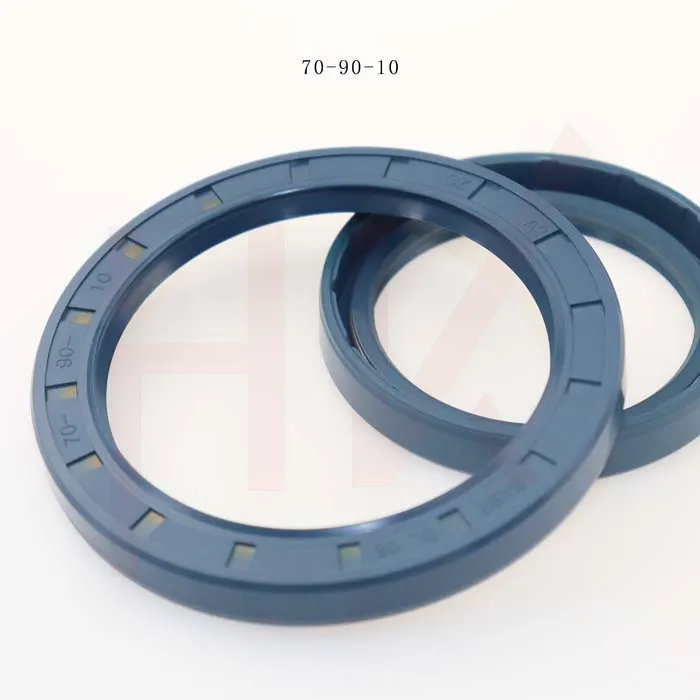Nov . 23, 2024 16:24 Back to list
Understanding the Function and Importance of Rotary Shaft Seals in Mechanical Systems
Understanding Rotary Shaft Seals Importance, Types, and Applications
Rotary shaft seals, often referred to as oil seals or dynamic seals, play a critical role in various mechanical systems. They are designed to prevent the leakage of fluids and contaminants from and into the machinery while allowing for the rotation of the shaft. Their applications span a broad array of industries, including automotive, aerospace, packaging, and manufacturing. As is the case with many engineering components, understanding the nuances of rotary shaft seals can greatly influence the effectiveness of machinery design and maintenance.
The Importance of Rotary Shaft Seals
In any rotating machine, the efficiency and longevity of the system heavily rely on the effectiveness of the seals. The primary function of a rotary shaft seal is to keep lubricants in while keeping dust, dirt, water, and other potentially harmful contaminants out. This is especially important for mechanical systems operating under high pressures or in harsh environments where the risk of leakage can lead to catastrophic failures.
Without proper sealing, lubricants would leak out, leading to inadequate lubrication, increased friction, and ultimately system failure. Moreover, the ingress of dirt and contaminants can lead to wear and tear on critical components, resulting in costly repairs and downtime. Thus, rotary shaft seals are vital for maintaining performance, increasing durability, and ensuring operational efficiency.
Types of Rotary Shaft Seals
Rotary shaft seals can be categorized based on their design, material, and application
1. Lip Seals The most common type of rotary shaft seal, lip seals consist of a flexible lip that makes contact with the shaft. They are often made from rubber or silicone and are ideal for low to moderate pressure applications.
2. Mechanical Seals These seals are designed to manage high-pressure situations and are typically used in pumps and compressors. They utilize a flat surface that forms a sealing line between the rotating shaft and the stationary housing.
3. Polymer Seals Made from advanced polymers, these seals can withstand extreme temperatures and aggressive fluids, making them suitable for industrial and aerospace applications.
rotary shaft seal

4. V-Rings V-rings are unique in their design, providing a seal against a counterface without needing a smooth surface. They are flexible and can cover a wide range of radial and axial displacements.
Understanding these different types of seals allows engineers and maintenance teams to select the most appropriate option for their specific applications.
Applications of Rotary Shaft Seals
Rotary shaft seals are utilized in an abundant number of environments, and their applications are as diverse as the types of machinery they are used in. Some typical applications include
- Automotive Engines In vehicles, rotary shaft seals are found in engines, transmission systems, and wheel hubs, ensuring that oil and lubricants are contained and that contaminants are kept out.
- Industrial Machinery Manufacturing equipment such as conveyors, pumps, and motors often employ rotary shaft seals to ensure optimal performance and prevent leaks.
- Aerospace In the aerospace sector, rotary shaft seals are used in engines and landing gear mechanisms to withstand extreme conditions while maintaining performance and safety.
- Home Appliances Many everyday appliances, like washing machines and dryers, utilize rotary shaft seals to contain fluids and enhance durability.
Conclusion
In summary, rotary shaft seals are uncompromising heroes in the machinery world, preventing leakage and ensuring the smooth operation of various systems. The importance of selecting the right type and material cannot be overstated, as it directly impacts the efficiency and longevity of the equipment. As technology continues to advance, the design and material of rotary shaft seals will continue to evolve, offering innovations that meet the ever-changing demands of various industries. Understanding their function, types, and applications will help in making informed decisions regarding maintenance and design strategies, ultimately enhancing operational effectiveness and sustainability in numerous mechanical processes.
-
TCN Oil Seal Metal Ring Reinforcement for Heavy Machinery
NewsJul.25,2025
-
Rotary Lip Seal Spring-Loaded Design for High-Speed Applications
NewsJul.25,2025
-
Hydraulic Cylinder Seals Polyurethane Material for High-Impact Jobs
NewsJul.25,2025
-
High Pressure Oil Seal Polyurethane Coating Wear Resistance
NewsJul.25,2025
-
Dust Proof Seal Double Lip Design for Construction Equipment
NewsJul.25,2025
-
Hub Seal Polyurethane Wear Resistance in Agricultural Vehicles
NewsJul.25,2025
-
The Trans-formative Journey of Wheel Hub Oil Seals
NewsJun.06,2025
Products categories
















